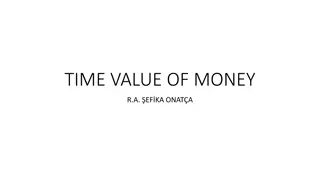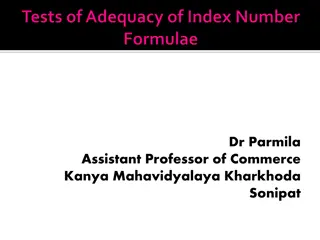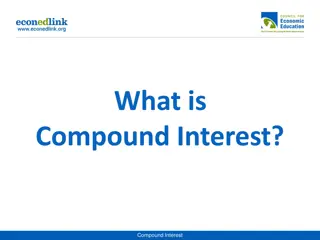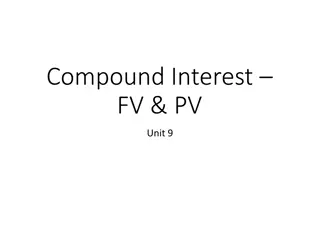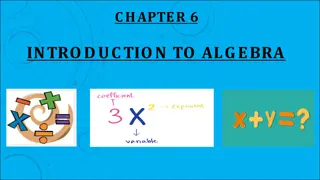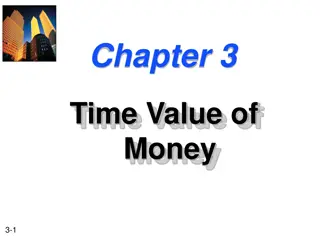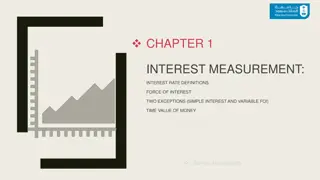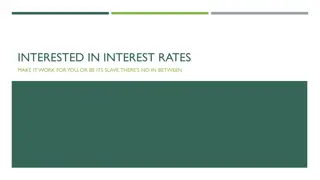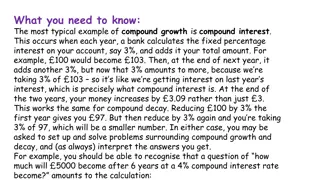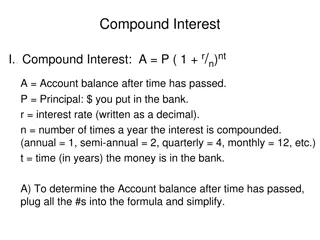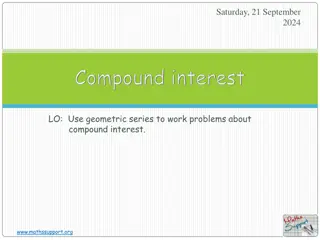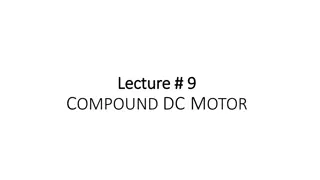Understanding Compound Interest Formulas in Advanced Financial Algebra
Compound interest involves earning interest not only on the principal amount but also on the accumulated interest. This concept allows money to grow faster over time. By using formulas for periodic compounding, you can calculate the ending balance of investments with different compounding frequencies such as quarterly or daily. Examples provided demonstrate how to apply these formulas effectively in real-life scenarios.
Download Presentation

Please find below an Image/Link to download the presentation.
The content on the website is provided AS IS for your information and personal use only. It may not be sold, licensed, or shared on other websites without obtaining consent from the author. Download presentation by click this link. If you encounter any issues during the download, it is possible that the publisher has removed the file from their server.
E N D
Presentation Transcript
2-5 Compound Interest Formula Advanced Financial Algebra
What is compound interest? Remember description and examples from Section 2-4. Compound interest means that you are paid interest on your balance AND on previous interest you have earned. Compound interest allows your money to grow FASTER!
Developing formula Start with % increase and decrease formula: A = P(1 + ?)?= Principal (1 + ????)???? r is the interest rate, but we must divide it into periods depending upon how frequent compounding occurs: r = %/(# of compounds per year, n) written as a decimal ? ?)(??) Periodic compounding formula (not just yearly/annual): A = P(? + A = amount $ after time P = Principal (original $) r = rate as a decimal n = number of compounds per year t = time in years
Example 1 quarterly compounding using formula Jose opens a savings account with principal P dollars that pays 2% interest, compounded quarterly. What will his ending balance be after 1 year? SOLUTION: ? ?)(??)= P(1 + .02 4)(4 1)= P(?.???)(?) Use the formula: A = P(1 +
Example 2 daily compounding using formula If you deposit P dollars for 1 year at 2.3% compounded daily, express the ending balance algebraically. SOLUTION: Use the formula with r = 2.3% as a decimal = .023 and n = 365 for daily: ? ?)(??)= P(1 + .023 365)(365 1)= P(?.?????????)(???) A = P(1 +
Example 3 daily compounding given Principal Marie deposits $1,650 for 3 years at 1% interest, compounded daily. What is her ending balance? SOLUTION: Use the formula with P = $1.650, r = 1% as a decimal = .01, n = 365 for daily, and t = 3 years: ? ?)(??)= 1650(1 + .01 365)(365 3)= A = P(1 + $1,700.25 after three years
Assignment: pg 100 #3-6, 8, 11, 13 #3 #4 #5
Assignment: pg 100 #3-6, 8, 11, 13 continued #6 #8 #11 #13 Rodney invests a sum of money, P, into an account that earns interest at a rate of r, compounded yearly. Gerald invests half that amount P/2 into an account that pays twice Rodney s interest rate 2r. Which of the accounts will have the higher ending balance after 1 year? Explain.




